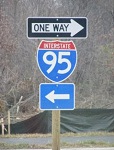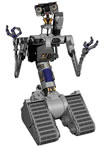I'm designing a new site for myself right now and I have a simple question.
If I go ahead and design it on a widescreen (1280 x 768)....is that the way to go
for a no problem display at normal full size?
It's better for a PC to downscale than vice versa?
I did some programming with a full screen (not html, visual basic) and it caused nothing'
but problems when I wanted to run the app on a widescreen.
Thanks for any help.
If I go ahead and design it on a widescreen (1280 x 768)....is that the way to go
for a no problem display at normal full size?
It's better for a PC to downscale than vice versa?
I did some programming with a full screen (not html, visual basic) and it caused nothing'
but problems when I wanted to run the app on a widescreen.
Thanks for any help.
Because there is such a big difference between monitor sizes, browser preference and even display size setting in Windows, there is not "perfect" size for a website. This forum is a perfect example of how a website can fit most monitors. It's limited in width, so it should fit nicely on a 17 inch screen, yet stay centered so it can be seen nicely even on a 24 inch monitor. If you design a site that is too wide, the users with smaller monitors will have to scroll sideways to see the content on the right side of each page.
It is much more acceptable to have the visitor scroll down (which we are all used to) than it is to expect them to scroll right, then back to the left, then down, the right again....bla bla bla.
Just my opinion, but I will leave a site quickly if I have to go to all that trouble just to view content on a web page
It is much more acceptable to have the visitor scroll down (which we are all used to) than it is to expect them to scroll right, then back to the left, then down, the right again....bla bla bla.
Just my opinion, but I will leave a site quickly if I have to go to all that trouble just to view content on a web page
E-Learning Specialist
www.mainsites.ca is my website, and yes, some of it is crappy.
www.mainsites.ca is my website, and yes, some of it is crappy.
Cliff Main wrote:
It is much more acceptable to have the visitor scroll down (which we are all used to) than it is to expect them to scroll right, then back to the left, then down, the right again....bla bla bla.
It is much more acceptable to have the visitor scroll down (which we are all used to) than it is to expect them to scroll right, then back to the left, then down, the right again....bla bla bla.
Much truth in what you said... But if a site is well designed and scrolls either vertically OR horizontally, it should be fine (provided that it clearly shows the scroll option). However, if a viewer has to scroll in both directions, you're just yelling at them to leave.
Living the dream, stocking the cream 
What puzzles me is that I see sites that not only fill a full screen but a widescreen as well, without horizontal scrolling.
But perhaps, it's been an illusion.
I suppose the key is to keep a solid color as the background and do the art at about
12" wide.
I see that now.
But perhaps, it's been an illusion.
I suppose the key is to keep a solid color as the background and do the art at about
12" wide.
I see that now.
Now, wait a minute.....I knew it wasn't my imagination....
For example, go to Yahoo mail or "MyEbay"
Take MyEbay for example (not the index page).
I have 2 PC's side by side right now, one is a 15" full screen and the other 19" wide.
There is NO horiz scrolling on my fullscreen, yet they both have the same content from side to side.
And not just the background color but graphics, fonts...you name it.
So -- how do they do that?
It must be some sort of ability to read the users monitor type. ?
For example, go to Yahoo mail or "MyEbay"
Take MyEbay for example (not the index page).
I have 2 PC's side by side right now, one is a 15" full screen and the other 19" wide.
There is NO horiz scrolling on my fullscreen, yet they both have the same content from side to side.
And not just the background color but graphics, fonts...you name it.
So -- how do they do that?
It must be some sort of ability to read the users monitor type. ?
There is a way to do that. You have to code everything to have a % rather than a fixed width. You can have a table that is 900 pixels wide (fixed width) or you can have a table that is width="90%" and that will scale itself to be 90% or whatever window it is in. The downside is that the content also needs to be written in a way that scaling will still display everything properly. It's a tricky thing to do.
Yahoo and Ebay are billion dollar companies. I'm sure that their Web 'budget' is also huge, so they can pay quite the team for designing things that way.
You can use % for images, tables, content and the best way would be to create a style sheet to control all of that content. Experiment on different size monitors with different resolutions to see how this affects your content. All of this text wraps and looks ok at the current width of this web page, but what if it was spread over a 30 inch monitor? Many of these posts would not fill a single line, and totally loose the paragraph look.
Yahoo and Ebay are billion dollar companies. I'm sure that their Web 'budget' is also huge, so they can pay quite the team for designing things that way.
You can use % for images, tables, content and the best way would be to create a style sheet to control all of that content. Experiment on different size monitors with different resolutions to see how this affects your content. All of this text wraps and looks ok at the current width of this web page, but what if it was spread over a 30 inch monitor? Many of these posts would not fill a single line, and totally loose the paragraph look.
E-Learning Specialist
www.mainsites.ca is my website, and yes, some of it is crappy.
www.mainsites.ca is my website, and yes, some of it is crappy.
Mike,
That is not hard to do with the HTML Editor, but I think it is not possible with VSD.
My issue with that is once you get a very wide screen, you have to move your head to read side to side. There is a reason Newspapers have their stories in narrow columns. It is easy to move down a narrow column, but if you have to move a large distance from left to right reading, you may loose your position when you try to return to the left of the next line.
As to how it is done... do not set any width styling and it should spread out to match any width monitor, unless you are using short lines of text.
That is not hard to do with the HTML Editor, but I think it is not possible with VSD.
My issue with that is once you get a very wide screen, you have to move your head to read side to side. There is a reason Newspapers have their stories in narrow columns. It is easy to move down a narrow column, but if you have to move a large distance from left to right reading, you may loose your position when you try to return to the left of the next line.
As to how it is done... do not set any width styling and it should spread out to match any width monitor, unless you are using short lines of text.
Mike Ring wrote:
I have 2 PC's side by side right now, one is a 15" full screen and the other 19" wide.
There is NO horiz scrolling on my fullscreen, yet they both have the same content from side to side.
And not just the background color but graphics, fonts...you name it.
So -- how do they do that?
It must be some sort of ability to read the users monitor type. ?
I have 2 PC's side by side right now, one is a 15" full screen and the other 19" wide.
There is NO horiz scrolling on my fullscreen, yet they both have the same content from side to side.
And not just the background color but graphics, fonts...you name it.
So -- how do they do that?
It must be some sort of ability to read the users monitor type. ?
If you design your page for a wide-screen monitor, there will be horizontal scrollbars with narrower windows.
However, the pages you refer to are designed to be elastic rather than fixed for a specific screen width.
This sort of layout can be achieved with the HTML Editor if you understand CSS. I don't see any way to do this with VSD.
Ok thanks "you all".
(I'm a yanky)
I'll go ahead and do the site like these coffee cup pages first and down the road
delve into the html side and "get her done"......perhaps.
Mike
(I'm a yanky)
I'll go ahead and do the site like these coffee cup pages first and down the road
delve into the html side and "get her done"......perhaps.
Mike
I'm seeing a lot of people designing sites with wider widths lately...and many of us are not using larger monitors. My bank, for instance, has switched to something probably around 1500px wide...stinker forces you to scroll right to make a transfer...grrrr....
Melanie
Melanie
Can one ever have too many snippets?
www.wehaveasite.com, www.monioriginals.com, www.thetreasurebox.net, www.flymetothemoonballoons.com
www.wehaveasite.com, www.monioriginals.com, www.thetreasurebox.net, www.flymetothemoonballoons.com
Have something to add? We’d love to hear it!
You must have an account to participate. Please Sign In Here, then join the conversation.





